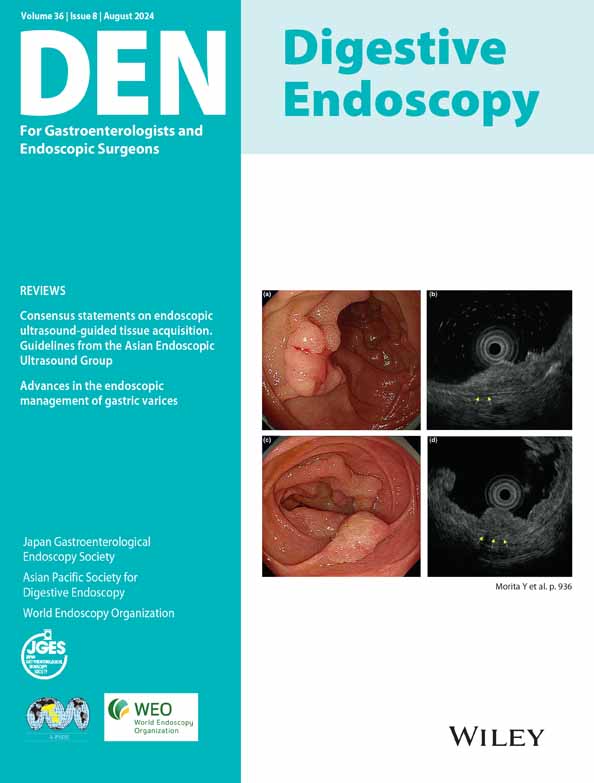Development of a new endoscopy system to visualize bilirubin for the diagnosis of duodenogastroesophageal reflux
Abstract
Objectives
Reflux hypersensitivity (RH) is a form of refractory gastroesophageal reflux disease in which duodenogastroesophageal reflux (DGER) plays a role. This study aimed to determine the usefulness of an endoscopy system equipped with image-enhanced technology for evaluating DGER and RH.
Methods
The image enhancement mode for detecting bilirubin and calculated values were defined as the Bil mode and Bil value, respectively. First, the visibility of the Bil mode was validated for a bilirubin solution and bile concentrations ranging from 0.01% to 100% (0.002–20 mg/dL). Second, visibility scores of the Bil mode, when applied to the porcine esophagus sprayed with a bilirubin solution, were compared to those of the blue laser imaging (BLI) and white light imaging (WLI) modes. Third, a clinical study was conducted to determine the correlations between esophageal Bil values and the number of nonacid reflux events (NNRE) during multichannel intraluminal impedance-pH monitoring as well as the utility of esophageal Bil values for the differential diagnosis of RH.
Results
Bilirubin solution and bile concentrations higher than 1% were visualized in red using the Bil mode. The visibility score was significantly higher with the Bil mode than with the BLI and WLI modes for 1% to 6% bilirubin solutions (P < 0.05). The esophageal Bil value and NNRE were significantly positively correlated (P = 0.031). The area under the receiver operating characteristic curve for the differential diagnosis of RH was 0.817.
Conclusion
The Bil mode can detect bilirubin with high accuracy and could be used to evaluate DGER in clinical practice.
CONFLICT OF INTEREST
Author H.O. belongs to an endowed course supported by companies including Ono Pharmaceutical Co., Ltd., Miyarisan Pharmaceutical Co., Ltd., Sanwa Kagaku Kenkyusho Co., Ltd., Otsuka Pharmaceutical Factory, Inc., Fujifilm Medical Co., Ltd., Terumo Corporation, FANCL Corporation, Ohga Pharmacy, Abbott Japan LLC, and Muta Hospital. E.I. received a lecture honorarium from Takeda Pharmaceutical Company. Y.O. conducted collaborative research with Fujifilm Medical Co., Ltd., and the FANCL Corporation. The other authors declare no conflict of interest for this article.




